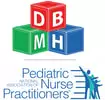Developmental Delay: Fine motor skills
Fine motor delay is the lack of ability to manipulate the environment or awkward manipulation of the environment with the upper extremities. Motor development follows a predictable sequence, with skill development beginning from cephalic to caudal, proximal to distal, and from generalized to specific reactions that become increasingly precise as children grow.
|
Fine motor skills do not develop in isolation, but in conjunction with other areas of development including gross motor, sensory integration, cognitive, and visual/perceptive skills. The pyramid of learning (shown below) illustrates how all aspects of the central nervous system build on each other to facilitate motor development and learning overall. Before gaining skills at a higher level of the pyramid, a child must master skills at lower levels, which are fundamentally based on tactile, vestibular, and proprioceptive development. Hand-eye coordination, an aspect of fine motor development, relies first on the development of motor planning, postural stability, and laterality. Fine motor delay is often, but not always, encountered in conjunction with gross motor delay, as they are often monitored together using screening tools for parents and providers that draw upon developmental milestones.
|
Assessment & Screening
|
Conduct developmental surveillance at each visit per AAP Bright Futures Guidelines. These age associated milestones represent pediatric populations at the 50th percentile. (Gerber, 2010).
Validated tools recommended for Primary Care visits that accurately screen for fine motor delays include: the Ages and Stages Questionnaire (ASQ) (need more examples). In the case of the ASQ questionnaire, it is given to parents as a tool for developmental surveillance at home and is typically administered at 9, 18 and 30 months for the general population. Fine motor is screened along with a number of other domains (gross motor, social/cognition, etc.) because neuromotor delays often present in a constellation of symptoms. It is important to understand how/what delays are present and the context in how they intersect with each other. |
Image from AAP’s “Motor Delays: Early Identification and Evaluation”
|
INFANT RED FLAGS
|
0-8 months
|
12 months
|
TODDLER RED FLAGS
|
18 months
|
2 years
|
3 years
|
OT Assessment Tools
If fine motor delay is identified, children are often referred for specialized assessment by an occupational therapist. Assessments that an OTs may use to refine/identify a child’s delay include:
If fine motor delay is identified, children are often referred for specialized assessment by an occupational therapist. Assessments that an OTs may use to refine/identify a child’s delay include:
- Beery-Visual Motor Integration: Identifies difficulties in visual, perceptual and motor integration and coordination, specifically finger and hand movement/coordination. Appropriate for ages: 2-18 years
- Peabody Developmental Motor Scales (PDMS 2): Uses six subtests to assess the areas of reflexes, stationary (stability), locomotion, object manipulation, grasping, and visual-motor integration. Appropriate for birth to 5 years
- Bruininks-Oseretsky Test of Motor Proficiency (BOT/BOTII): Assesses and scores children in the areas of fine manual control, manual coordination, body coordination, strength and agility, and total motor composite. Appropriate for ages 4-21 yrs.
Treatment
Once specific deficits are identified, the child may qualify for occupational therapy through regional centers or public school districts, and OTs will work with child to develop fine motor skills.
- If child is below 3 years old and a California resident, refer the child to their local Regional Center (RC) ASAP. If privately insured, it is still important to refer to RCs; they can provide "bridge" services while the private OT referral is expedited.
- If child is over 33 months, refer child to local school district for services, regardless if home-schooled or enrolled in private school.
- If there is a constellation of delays and/or the child is not making progress with OT alone, consider am interdisciplinary approach and refer to a developmental-behavioral pediatrician.
- Familiarize with developmental services or regional centers. Help me grow website links to services. See if your state participates!
Position Papers
- AAP's Position Paper (2006): Identifying Infants and Young Children With Developmental Disorders in the Medical Home: An Algorithm for Developmental Surveillance and Screening. Full text found at: http://pediatrics.aappublications.org/content/118/1/405.full.pdf+html
Articles
- Norit, G., Murphy, N., (2013). Motor delays: early identification and evaluation. Pediatrics, 133, 2016-2027. doi: 10.1542/peds.2013-1056
- Gerber, J., Wilks, T., Erdie-Lalena, C. (2010). Developmental milestones: motor development. Pediatrics in Review, 31, 267-277. doi: 10.1542/pir.31-7-267
Resources |
Organizations |
|
|
